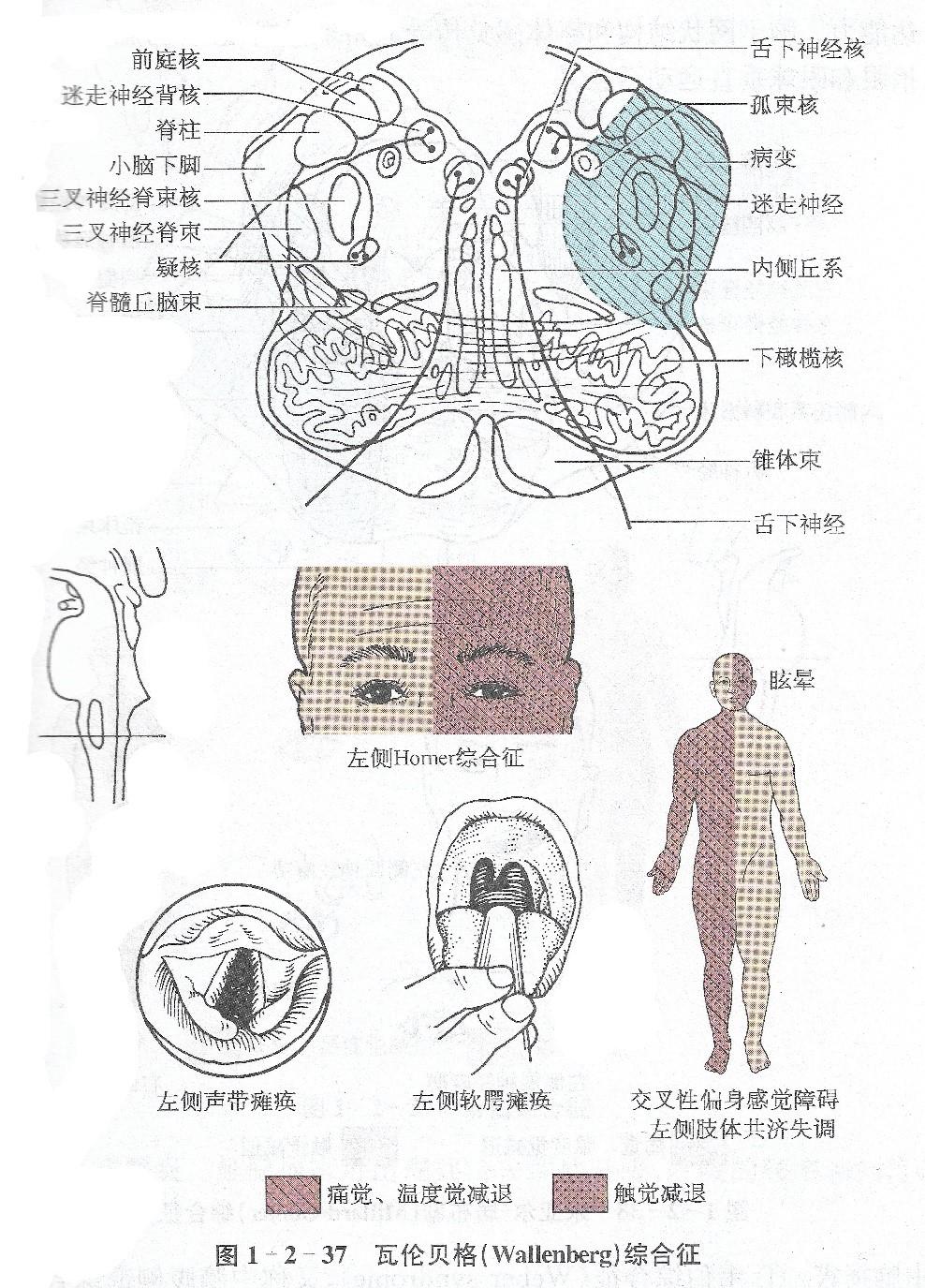

Horner syndrome (miosis, ptosis, upside down ptosis, anhidrosis)– due to disruption of the oculosympathetic chain, which descends through the lateral medulla.Other rarer causes such as vertebral artery dissection especially in predisposed younger individuals with Ehlers Danlos syndrome, Marfan syndrome, fibromuscular dysplasia and hypoplastic vertebral artery have been noted in prior literature. Primary etiologies include atherosclerosis, hypertension and other vasculopathic risk factors. While most commonly due to PICA occlusion, other arteries, such as the vertebral artery or branches of PICA, can be involved as well. WS is most commonly due to an occlusion of the PICA, resulting in ischemia and infarction of the lateral medulla. The blood flow and the cross-sectional anatomy of the medulla are illustrated in figures 1 and 2.įigure 2: cross-sectional anatomy of medulla including all nuclei and tracts Etiology The anterior spinal artery has its own median medullary branch, which perfuses the anteromedial region of the medulla. The anterior spinal artery provides blood flow to the remainder of the medulla. The medial medullary branch of PICA perfuses the anterior lateral medulla, and the lateral medullary branch perfuses the lateral medulla. The dorsal medullary branch of PICA perfuses the posterior medulla. The vertebral artery supplies the posterior inferior cerebellar artery (PICA), which has 3 main branches: the dorsal, medial, and lateral medullary branches. The primary blood supply to the medulla comes from the vertebral arteries. These regions are divided based on their differing arterial supply. The medulla can be divided into 4 regions: anteromedial, anterolateral, lateral, and posterior ( Figure 1). This monograph highlights the neuro-ophthalmic presentations for the WS. WS is typically due to ischemia from a vertebral artery or posterior inferior cerebellar artery infarction.

Wallenberg syndrome (WS) is a neurological disorder that is due to damage to the lateral portion of the medulla oblongata (i.e., the lateral medullary syndrome).


 0 kommentar(er)
0 kommentar(er)
